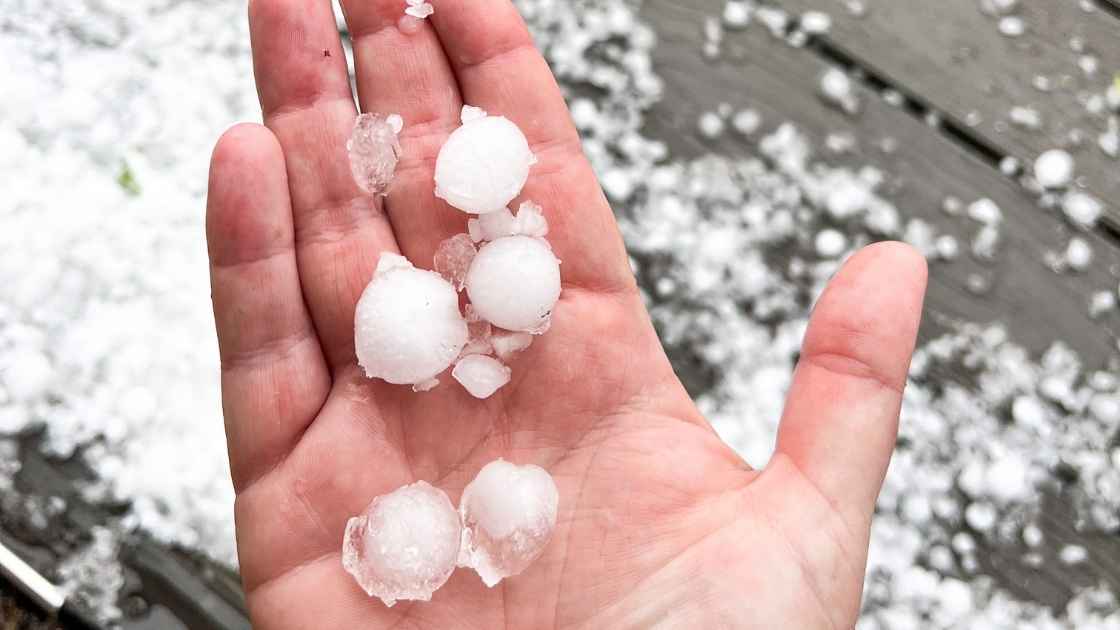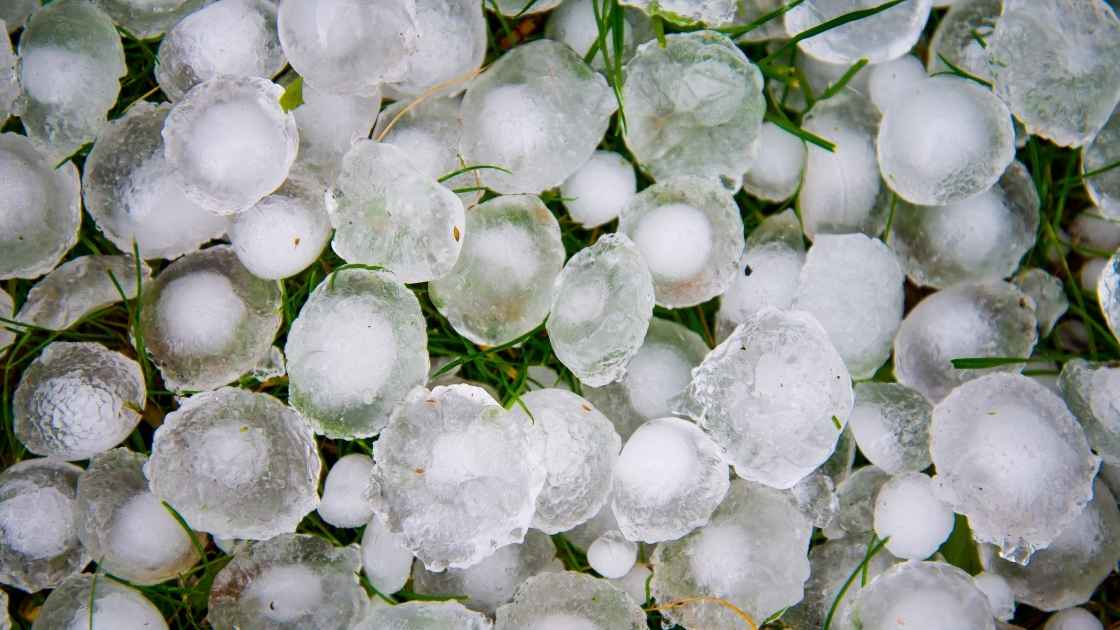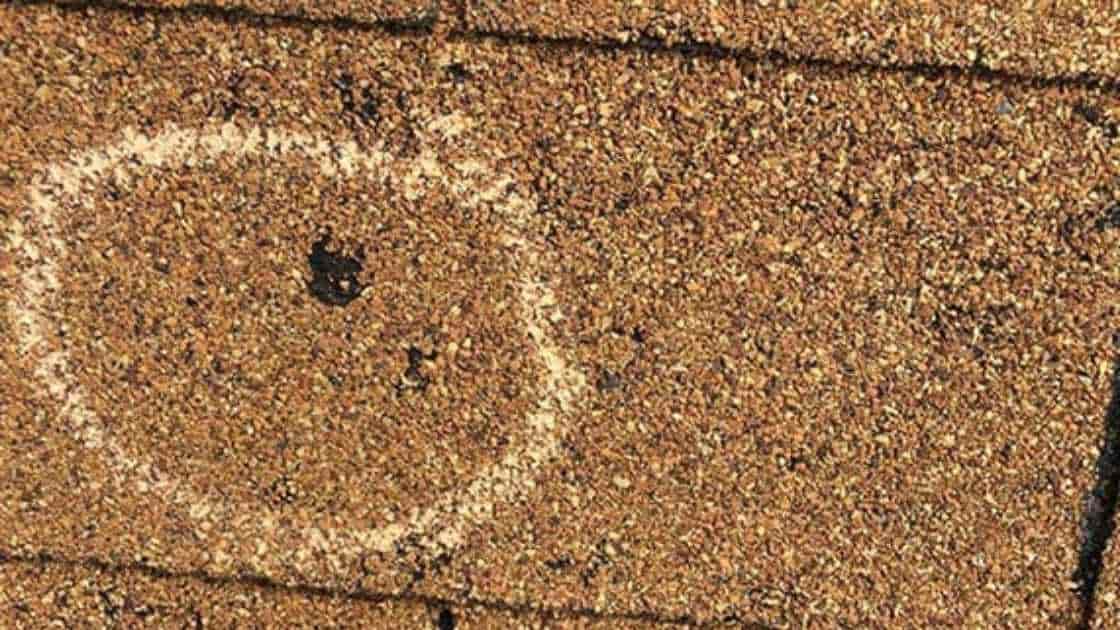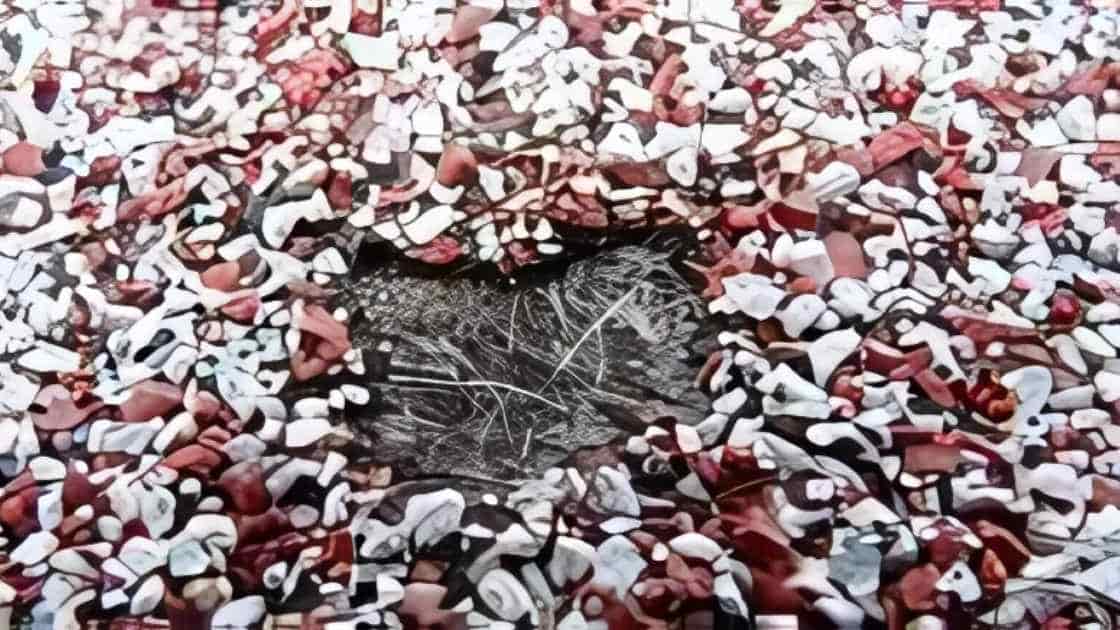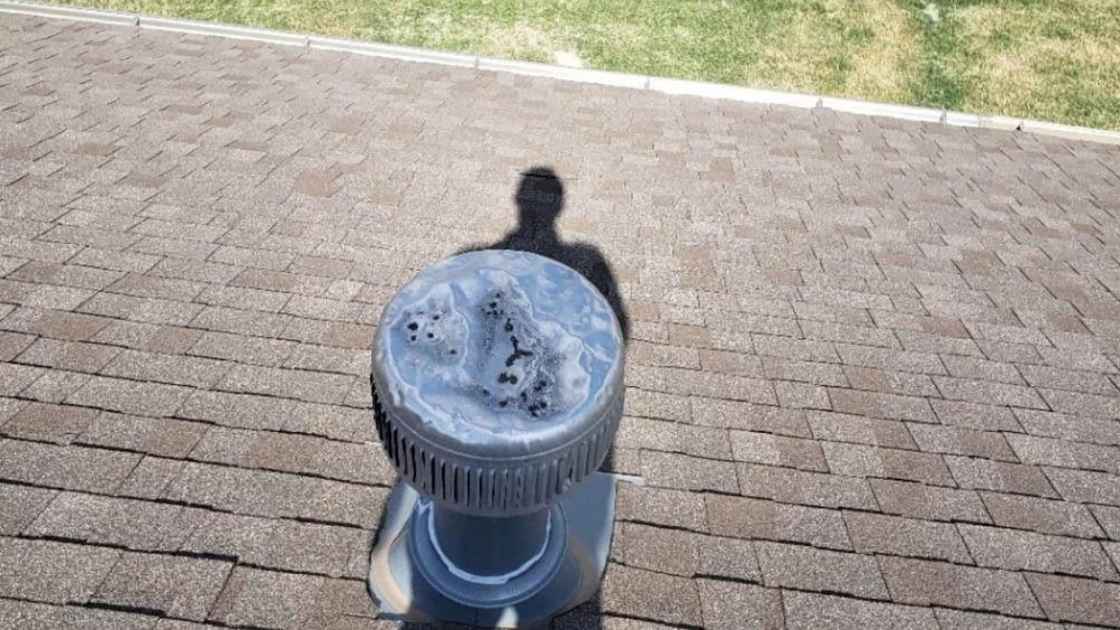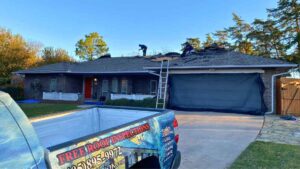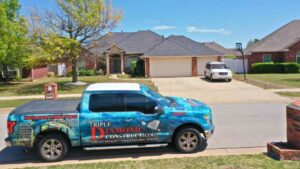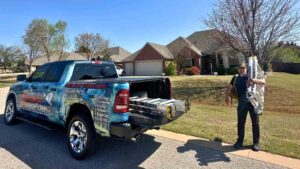Large storms can be unpredictable and destructive, causing varying levels of damage depending on the size of the hailstones. As a homeowner, it’s important to understand how hail size influences the scale of damage done to your property, including your roof, windows, siding, and other exterior features.
Knowing what to look for can help you identify potential damage early on and take swift action to protect your home!
In this blog, we’ll explore the types of damage each hail size can cause and discuss the areas of your home that are most vulnerable. By the end, you’ll have a clear understanding of how to assess hail damage and when to call a professional for a thorough home inspection.
Hail Size And Its Impact on Your Home
Hailstones can range in size from as small as a pea to as large as a softball, and each size has its own potential impact on your home’s exterior. Here’s a closer look at how hail size affects different areas of your property:
1. Pea-Sized Hail (1/4 inch in diameter)
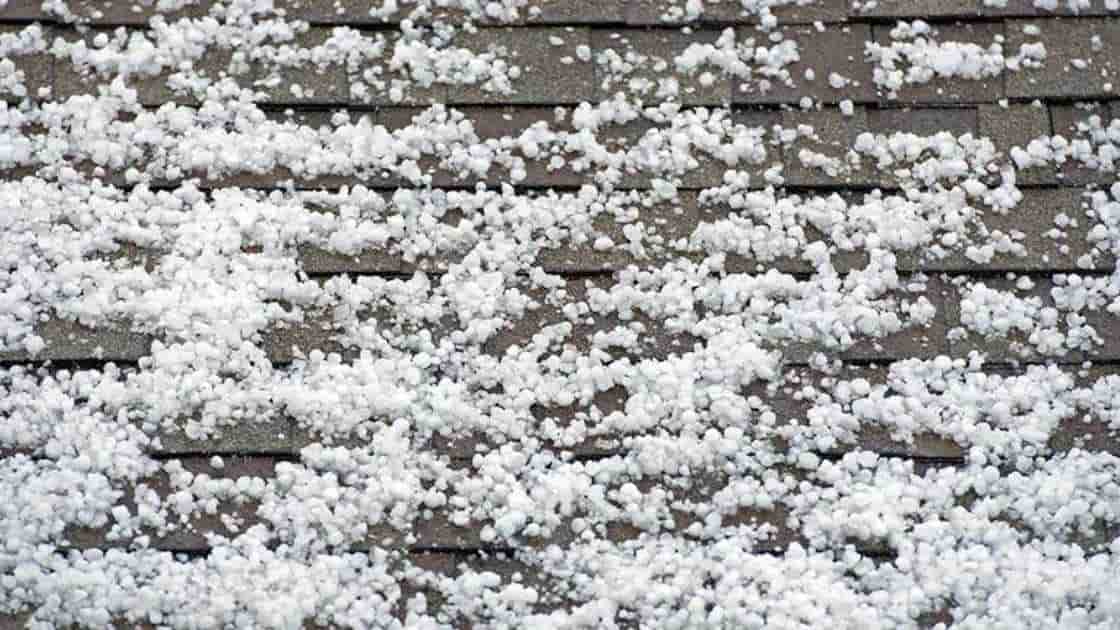
Pea-sized hail is considered small and is usually less destructive compared to larger hailstones. While it’s less likely to cause significant damage, it can still pose a threat under certain conditions.
- Roof Damage: Pea-sized hail won’t damage newer roofs, but older, worn-out shingles may sustain minor dents or bruising. If your roof is already vulnerable, it’s important to get it inspected after any hailstorm, no matter the size of the hail.
- Siding Damage: The impact from pea-sized hailstones usually won’t crack or dent siding, but it can chip paint or leave small scuff marks on older or weaker materials.
- Windows and Skylights: This size of hail usually bounces off glass surfaces without causing cracks, but repeated impacts can wear down window seals over time.
Potential Damage Level: Minimal
When to Inspect: If your roof is older or has pre-existing issues, or if you notice changes to your siding or paint.
2. Marble-Sized Hail (1/2 inch in diameter)
Hailstones the size of marbles are more common and can cause more noticeable damage, especially if the storm has high winds or lasts a long time.
- Roof Damage: Marble-sized hail can dislodge granules from asphalt shingles, leaving the underlayment exposed and susceptible to UV rays, which can shorten the roof’s lifespan. It can also dent metal roofing.
- Siding and Gutters: Repeated impacts can leave small dents in aluminum siding and gutters, which may lead to corrosion over time if not addressed.
- Windows and Skylights: Although not likely to break windows, marble-sized hail can cause scratches or chips on glass surfaces and weaken window seals.
Potential Damage Level: Low to Moderate
When to Inspect: After any storm with marble-sized hail, especially if your roof or siding is older or made from less durable materials.
3. Nickel-Sized Hail (3/4 inch in diameter)
Hailstones the size of dimes or nickels are where homeowners should start to get concerned. This size can cause visible damage, especially if the hailstorm lasts for several minutes. High winds can also increase the likelihood of damage to your home.
- Roof Damage: At this size, hailstones can cause more pronounced bruising on shingles, dent metal roofing, and potentially create small cracks in tiles or wood shakes. It’s critical to check for granule loss and soft spots that indicate deeper damage.
- Siding and Gutters: Nickel-sized hail can create small to medium-sized dents in metal siding and cause cracking or chipping in vinyl siding. Gutters and downspouts may also develop noticeable dents and become less effective at draining water.
- Windows and Skylights: While unlikely to shatter glass, this size of hail can cause small cracks or chips, especially on older or single-pane windows.
Potential Damage Level: Moderate
When to Inspect: After any hailstorm with hail this size, especially for older roofs, gutters, and windows.
4. Quarter-Sized Hail (1 inch in diameter)
Quarter-sized hail is considered large and is the size at which insurance companies begin to recognize hail as a significant threat to roofing and exterior materials.
- Roof Damage: Hail this size can crack shingles, especially older or lower-quality ones. It can dent metal roofs and puncture or chip clay or slate tiles. If not addressed, these cracks and punctures can lead to leaks and water damage.
- Siding and Gutters: Quarter-sized hailstones can cause large dents in metal siding and cracking or holes in vinyl siding. Wood siding may develop small cracks, and paint can be chipped or scratched off.
- Windows and Skylights: Quarter-sized hail has the potential to break windows, especially those that are already weakened or single-pane. It can also shatter skylights or create significant cracks that compromise the seal.
Potential Damage Level: High
When to Inspect: Immediately after a storm with hail this size, especially if you notice any visible signs of damage from the ground.
5. Golf Ball-Sized Hail (1.75 inches in diameter)
Golf ball-sized hail is a serious threat to your home’s exterior. Hail this size can cause major roof damage, and homeowners should take immediate action to assess their property.
- Roof Damage: Golf ball-sized hail can cause severe dents, cracks, and punctures in almost any type of roofing material, including asphalt shingles, metal, tile, and wood. This size of hail can also weaken the structural integrity of your roof by breaking through shingles and damaging the underlayment or roof deck.
- Siding and Gutters: Large dents, holes, and cracks in siding are common with hail this size. Gutters and downspouts can be heavily dented or even knocked loose, leading to drainage issues.
- Windows and Skylights: This size of hail can easily shatter glass windows and skylights, causing immediate safety concerns and exposing your home to water damage.
Potential Damage Level: Severe
When to Inspect: As soon as it is safe to do so after the storm. Contact a professional for an emergency inspection if you suspect major damage.
6. Baseball to Softball-Sized Hail (2.75 inches and larger)
Hailstones this size are rare but can cause catastrophic damage. Knowing the difference between a storm watch and a storm warning is critial to prepare for storms of this size. Homes exposed to this size of hail will likely need significant repairs.
- Roof Damage: Hailstones this large can completely destroy shingles, puncture roofing materials, and cause extensive damage to the roof deck. A complete roof replacement may be necessary.
- Siding and Gutters: Large holes, shattered panels, and displaced siding are common. Gutters may be torn off completely, and structural components of the home can be damaged.
- Windows and Skylights: Expect severe damage or complete breakage of windows and skylights, leading to water intrusion and safety hazards.
Potential Damage Level: Catastrophic
When to Inspect: Immediately after the storm. This level of damage requires professional assessment and likely an insurance claim for major repairs or replacements.
Protecting Your Home from Hail Damage
The best way to protect your home from hail damage is to choose durable, impact-resistant materials when possible and to schedule regular roof inspections. If your home has been through a recent hailstorm, don’t wait to get a professional assessment.
At Triple Diamond Construction, we offer free, no-obligation inspections to help homeowners identify and address hail damage early on. Our team will assess your roof, siding, and windows to ensure your home is safe and secure.
Call us at 405-895-9972 or schedule a free roof inspection online today!
Understanding the potential impact of hail and taking proactive measures can save you from costly repairs and help maintain your home’s integrity for years to come.

